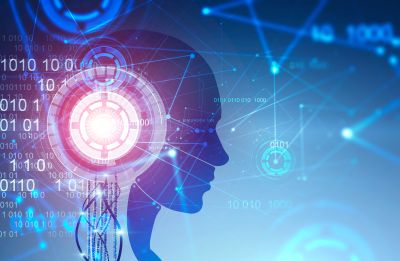USPTO’s New Standard for Patentable AI
The United States Patent and Trademark Office (USPTO) has taken a significant step in shaping the future of AI patent protection. In its latest memorandum, issued last August 4, 2025, the agency raised the bar for subject matter eligibility under 35 U.S.C. § 101, with a particular focus on artificial intelligence (AI) and software-related inventions. The new guidance seeks to bring greater clarity to the examination process, striking a balance between preventing overly broad § 101 rejections and ensuring that truly innovative AI-driven technologies receive the protection they deserve.
Securing patent protection for AI inventions in 2025 now requires more than broad references to machine learning or neural networks. The USPTO’s updated framework underscores that only claims tied to concrete, technical improvements are likely to survive § 101 scrutiny. For innovators, attorneys, and businesses at the forefront of AI, this development presents both new challenges and fresh opportunities—demanding a sharper focus on how an invention delivers real, practical innovation.
Background on § 101 Eligibility and AI
Under 35 U.S.C. § 101, an invention must fit into one of four statutory categories—process, machine, manufacture, or composition of matter—and cannot be directed solely to a judicial exception such as an abstract idea, law of nature, or natural phenomenon. The two-step Alice/Mayo test governs this analysis by asking: (1) whether the claim is directed to a patent-ineligible concept, and (2) whether it adds “significantly more” to transform that concept into patent-eligible subject matter.
For AI-related inventions, this analysis is especially complex. The USPTO has made clear that merely referencing AI, machine learning, or neural networks does not ensure eligibility; claims must show concrete, technical applications that go beyond abstract or generic uses of AI.
Highlights of the New USPTO § 101 Guidance
- Raised Rejection Threshold: The USPTO has heightened the standard for § 101 rejections. Examiners can no longer reject claims based on close calls; a rejection may now be issued only when it is more likely than not—over 50% likelihood—that a claim is ineligible. For applicants, this change lowers the risk of premature rejections and promotes a more balanced, equitable examination process.
- Narrowed Mental Process Limitation: The “mental process” exclusion now applies only to steps a person could realistically perform mentally or with pen and paper. Complex AI computations that exceed human mental capacity are not covered by this exclusion, giving innovators stronger grounds to protect advanced AI methods.
- Recites vs. Involves Distinction: The abstract idea exclusion applies only when a claim explicitly recites the idea, such as by naming specific algorithms. Claims that merely involve an abstract idea may still qualify if integrated into a practical application, providing applicants with greater opportunities to protect AI-related innovations.
- Holistic Claim Evaluation: Examiners must assess claims as a whole, considering how all elements interact with any abstract idea to form a practical application or technological improvement, rather than isolating individual parts. In other words, the focus is on whether the elements work together to produce a genuine technological advancement or practical application.
- Improvement vs. Mere Application: Claims must show a concrete technological improvement, not just routine use of a computer or AI. Enhancements to machine learning algorithms or training methods are favored, while simply automating existing tasks is insufficient.
The USPTO’s higher § 101 standard for AI patents strengthens both legal clarity and industry direction. Legally, it aligns with Federal Circuit rulings that require concrete technical improvements rather than abstract ideas, reducing inconsistent rejections and litigation risk. For industry, it creates a more predictable examination process that rewards genuine advancements in AI algorithms and methods, steering companies toward substantive innovation. In effect, the raised bar balances patent quality with the need to foster meaningful progress in AI technologies.

